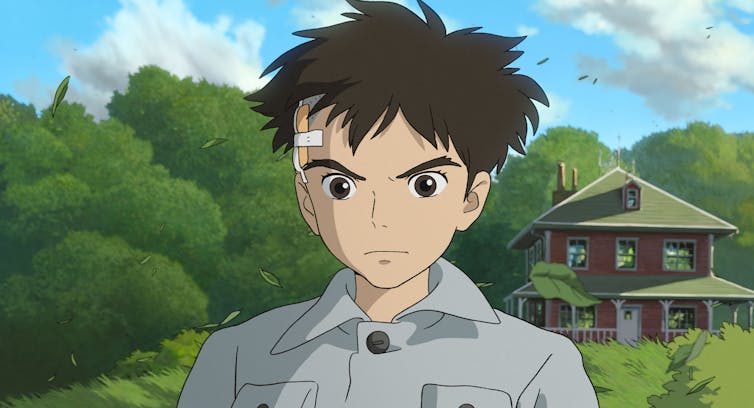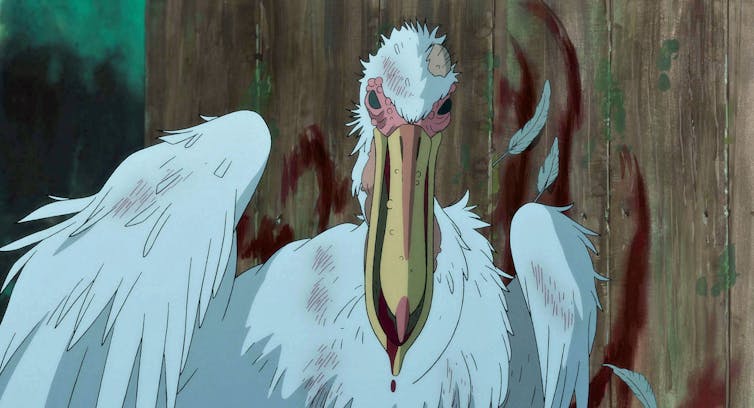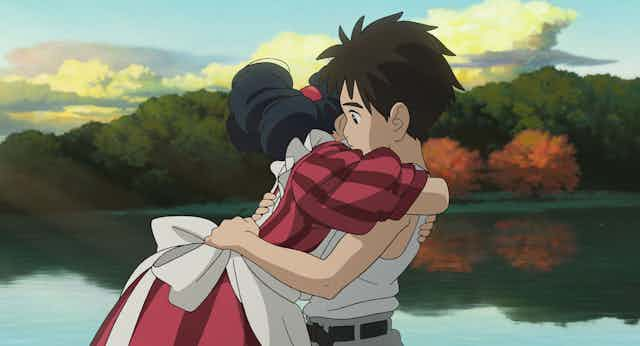Much about Hayao Miyazaki’s latest film, The Boy and the Heron, remained a mystery until its premiere in Japanese theatres on July 14.
The title Kimi tachi wa do ikiruka, or How do you live?, was revealed in 2017. (The Boy and the Heron is the English title.) No trailer was produced for a Japanese audience and there were no announcements regarding the film’s plot, voice actors or production team. The involvement of Joe Hisaishi, who has been composing music for Miyazaki’s films since Nausicaä of the Valley of the Wind (1984), was confirmed on July 4, a mere 10 days prior to the film release.
Mystery served as a strategic promotional tool for the film. After the release on July 14, Studio Ghibli discouraged the public from making any comments about the film’s contents on social media. No pamphlet – a popular publication typically available at Japanese movie theatres – was produced for this film. An official guidebook was only made available for sale at the start of November.
Miyazaki wanted the audience to see his film with no preconceived expectations.
A coming-of-age story
Genzaburo Yoshino’s novel How do you live? was published in 1937, four years before Japan joined the second world war. The book follows a teenage boy as he navigates the big questions about how to live your life through interactions with his friends, housekeepers and family, particularly an uncle who acts as a guide. It was originally intended to be an ethics book for young adults, rather than a work of literature, and Miyazaki held a deep fondness for the book during his childhood.
While the film is an original story and not a remake of the novel, it shares numerous similarities. Both narratives feature a teenage boy on a coming-of-age journey, seeking the meaning of life, and are set in a similar historical era.
The novel unfolds in the 1930s, a period when Japan was increasingly embracing militarism. The animation film is set during the second world war, likely in 1944 or 1945, following the Fall of Saipan when American military aircraft began civilian-targeted firebombing. The film’s main character, Mahito, experiences the tragic loss of his mother in a fire, presumably caused by firebombing, early in the story.
While the historical background of the film is obvious to a domestic audience in Japan, it may not be immediately apparent to many foreign viewers. There is no guiding narrative to explain the historical background in the film. Miyazaki’s use of the title from the novel reflects on Yoshino’s anti-war stance, but this connection is not clear in the English title.
The new title, The Boy and the Heron, is unrelated to the Japanese original. It was possibly crafted to appeal to an international audience unfamiliar with the novel. Here, the boy symbolises Miyazaki himself, a child who, having lost his mother and been compelled to leave Tokyo during wartime evacuations, continues to yearn for motherly comfort.

The boy embarks on a journey into an alternate world. A talking heron disrupts his journey, yet is crucial for the journey to reach completion. The encounter with the heron poignantly depicts how we can simultaneously embody friendship and opposition, mirroring the complexities of the real world.
The story serves as both a life lesson and an autobiographical reflection constructed by Miyazaki in the twilight of his life. It is a journey through time, an endeavour where he traverses decades to delve into his memories. For fervent Miyazaki enthusiasts, it offers a treasure trove that unveils the roots of his upbringing.
But the raw portrayal of Miyazaki’s past emotions might evoke discomfort. Some may feel reluctant to witness Miyazaki in such a vulnerable state, exposing aspects of himself they may not have anticipated encountering.
Born in 1941, the year when Japan entered the second world war, Miyazaki might have felt compelled to document his memories. Only a small fraction of today’s generations lived through the war; even fewer retain personal memories of that time. The opportunity to learn firsthand from direct experiences and oral histories is rapidly dwindling.

Awaiting another film
After 2013’s The Wind Rises, Miyazaki spent ten years creating The Boy and the Heron. During this time, speculations this might be his final film circulated in Japanese media.
Now 82 years old, Miyazaki has surprised many by already confirming his motivation to embark on his next cinematic endeavour. Despite his age, he has made clear his intent to create another film.
But The Boy and the Heron feels like the concluding work of his long journey, packed with messages to younger generations. His unusual request to not share any details of the film on social media suggests he wants his audience to individually consider the important issue of how to live your own life. While it is nice to feel connected, there should also be time to be on your own, and think.
Read more: How Studio Ghibli films can help us rediscover the childlike wonder of our connection with nature

